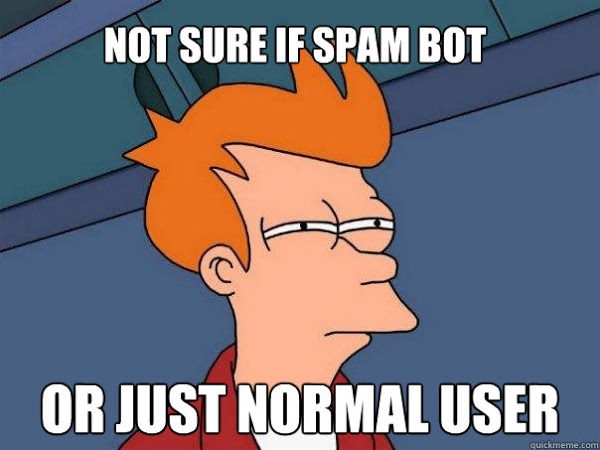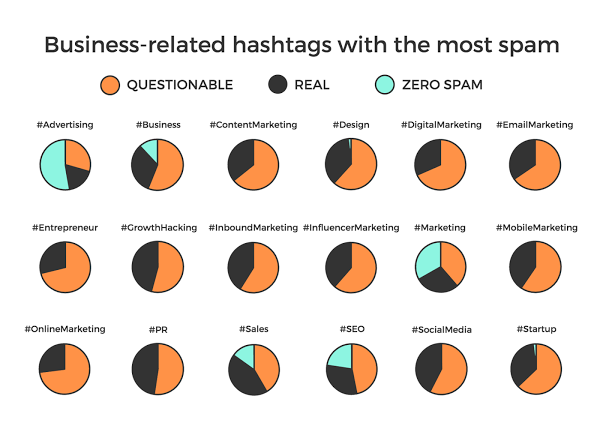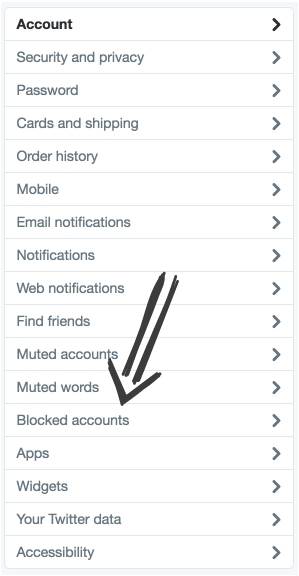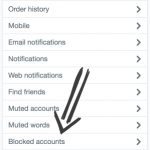How To Protect Your Brand From Twitter Spam
— October 6, 2017
Marketers do all they can to avoid contact with spam accounts, but what many don’t know is that spam accounts can come in many different forms to confuse users into interacting with them. This leads to inaccurate analytics if you’re looking to engage with genuine audiences, and in some cases, you might build your marketing strategy based on these faulty results. That’s why it’s important to be informed on how spam accounts can engage with your content, and how you can be better about avoiding them in the future.
Spam Accounts Are Everywhere
A study from Venngage found that a reported 5% of Twitter’s monthly user base consists of spam accounts. 5% may not seem like a lot, but when you factor in that Twitter’s user base has about 300 million users, 5% is equal to around 15 million accounts.
So, What Does A Spam Account Look Like?

Most Twitter users are frequently interacting with spam accounts without even realizing it, and that’s because some may be harder to spot than others. Some spam accounts are easily identifiable with an egg icon in place of a profile picture and nothing in the bio. These accounts follow a disproportionate number of people compared to their number of followers. They also constantly retweet content rather than post original tweets. These red flags are well-known spam account identifiers, but as Twitter users have grown savvier, spam accounts have become much more detailed in an effort to masquerade as real Twitter accounts.
Spam accounts that are harder to identify may include a profile picture of a successful or famous person. The account below appears to be a model on a runway, and all of the content in this profile consists of retweets. In the bio, there is a website link which leads to a site for freelance work. It may be spam or legitimate, but regardless the link is random and doesn’t fit with the rest of the details provided.

In some cases, accounts may be hijacked from previous users. Hijacked accounts may date back a few years to the time when the original user was active, while non-hijacked accounts may only date back a week.
This, understandably, makes it harder to spot fake accounts. Bios can be filled out on spam accounts, but with these bios are random buzzwords; i.e., beer, geek, fanatic, believer, yoga lover, etc. Accounts like these might even tweet original content, rather than just retweeting, but these tweets tend to be in gibberish or are nonsensical; i.e., “We goin 2be rich!” or “Do tell! #news.”
Hashtags That Attract Spam Accounts
Spam accounts maneuver their way through the Twittersphere primarily through locking in on a popular hashtag in a certain community. They may have websites and details listed in their bios that are pulled from other popular users in a certain community that they are targeting.
The easiest way for spam accounts to find popular communities is through using popular hashtags. For the marketing community, these hashtags might consist of #SEO, #Marketing, #Sales. Below are the results from a Venngage study showing which hashtags spam accounts hijack to find and interact with users.

Definition of ZeroSpam: Following no one else but has shared upwards of 1k tweets a month, otherwise known as Retweet Farms.
In the image, zero spam accounts are clearly identifiable as spam, while questionable accounts are accounts that are more detailed, yet they are still questionable through their odd activity.
The best way to avoid encounters with zero spam or questionable accounts is to refrain from prolific hashtagging unless you are directly trying to connect with a user or community. Hashtags work for directly engaging with users and are better used in moderation. For more on when and where to use hashtags, revisit our article covering the relevance of hashtags on social media.
What is Twitter Doing About These Spammy Profiles?
Twitter has claimed to make efforts in combating these spam accounts, but some may question their thoroughness when numerous spam accounts, dating back a few years, are still fully active. Users can report spam accounts, but it’s hard to tell if this method is effective from the amount of old spam accounts still active.
So, What Can You Do to Avoid Contact with Spam Accounts?

The main rule of thumb is to avoid spam accounts because they can unknowingly boost your social authority and engagement results on the platform, which only hurts your performance on Twitter.
For Twitter users with a moderately-sized following, Twitter provides the option to create a list of blocked accounts. These lists can even be shared to help others be aware of the same spam accounts.
For users that have an expansive following, tools like Crowdfire app make it easy to weed through new spam followers. Users can add spammy accounts to a blacklist, which means that you won’t ever be recommended to follow them again, even if they unfollow and refollow your account. These blocked accounts remain on the blacklist until they are manually removed, keeping your accounts safe from false engagements.
We hope this helps you identify and do away with spam accounts so you can focus on building a genuine Twitter following. Good luck!
This post originally appeared on blog.gainapp.com.
Digital & Social Articles on Business 2 Community
(37)












